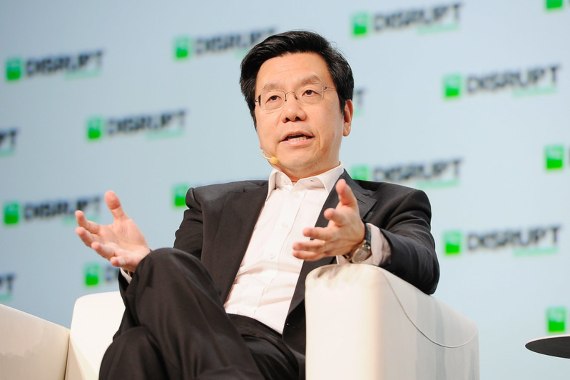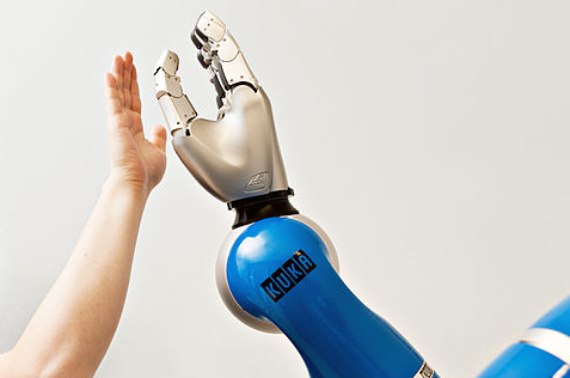Robots are now having a major impact on the workplace with many job losses forecast in the future. For example, according to Kai Fu Lee, almost 40% of the world’s jobs could be lost to automation and robotics within 15 years. But these job losses are not simply due to robots replacing human workers. The way that robots are being used in the workplace is also changing. This article looks at the technologies that brought this about and describes a range of examples of their current uses.

Robots have been used in industrial assembly plants for several decades but their roles were very limited and restricted to uses away from humans – such as dedicated car assembly plant tasks. These robots were often large, dumb, in that they were pre-programmed by human programmers, and unaware of their surroundings. Hence, for reasons of safety to humans, they were frequently installed in caged environments away from humans.
In recent years, a new generation of robots, collaborative robots (known as cobots) have emerged that work in combination with humans – frequently by complimenting tasks that the other does well. These robots are used in a wide variety of ways and in very diverse application areas. Their strength is often through the augmenting and complementing each other’s skills. Unlike their predecessors, they can use force detecting sensors to enable them to work safely alongside humans. Moreover, they don’t need the same type of programming that the older generation of robots required. Cobots are transforming the robotics market with applications in use almost everywhere. According to a new study published by ABI Research, growth will exceed $1 billion in the collaborative robot market by 2020, and by 2025, this market is likely to grow to over 175% of its current level 1.
Robot technology today
Industrial robots have been used in car assembly plants since the 1980’s and were conceived many years before. However, these robots seldom used artificial intelligence and had no mobility beyond movement through single arms. They were mainly programmed to slavishly perform specific repetitive tasks – such as spot welding or painting.

Today’s robots have become much smarter and mobile – mainly as a result of AI software improvements. These improvements have undergone a quantum leap in the last five years because of their learning ability. Using machine learning techniques means that they require less supervision from humans and are therefore more conducive to autonomous operation. This together with improved sensors and mobility hardware, means that they are better suited to working alongside people by sensing their environment, comprehending what needs to be done, acting, and learning from experiences 2. Today’s robots are still doing the tedious tasks that humans don’t do that well – such as performing repetitive tasks. But they are also doing several other tasks, such as learning from the analysis of large data sets on the job enabling them to adapt and improve their work. They come in all shapes, and sizes, and intelligence levels according to their needs. Many have increased mobility closer to that of humans because they can be equipped with machine vision enabling them to interact with a changing environment. And whilst the technology will improve significantly in the future, they are making an impact now as we can see from the examples that follow.
Examples of the use of Cobots
There are many examples of Cobots in use in a variety of applications. Stenner Pump, is a Florida-based company employing 90 people. Stenner acquired a cobot called Baxter, a two-armed robot custom made for the application. Baxter is being used to feed parts directly from manufacture into packaging, reducing human handling by 75 per cent. Baxter works alongside humans enabling the human employees to get on with other work.
Industries that were thought to be immune from intrusion of robotics are changing too. For example, a bricklaying robot called SAM (Semi Automated Mason) can build walls up to six times faster than human bricklayers. SAM is capable of laying 3,000 bricks per day, as compared with a human builder who could average of around 500 bricks per day. SAM is currently working in many parts of the world alongside human bricklayers
In farming, robots are being used in planting, weeding, and harvesting crops, as well as milking cows, in ways that would have been unthinkable even a few years ago. For example, a startup based at Plymouth University, UK, unveiled a raspberry picking robot that can pick about 25,000 berries a day. This is 10,000 more than a human typically does during an eight-hour shift. In the past, this type of task would have been regarded as very challenging for machines because the robots have to identify ripe fruit and handle the soft berries without damaging them and learn to adapt to different light conditions. Nevertheless, the manufacturer claims that using the robot would undercut the cost of employing human fruit pickers and would be able to work around the clock during the crucial harvesting period.
Self-driving or autonomous vehicles provide another example of robots and humans working in collaboration. Whilst a truly autonomous ride in a self-driving vehicle is some years away, most vehicles under current development are providing greater levels of autonomy, or semi-autonomy, with each passing year. Many cars are now available as semi-autonomous or level 2. At this level, a vehicle can drive straight in its lane and control the distance from vehicles in front without driver intervention. This means that this level of autonomy can take control over steering and braking in the event of traffic queues ahead of it.
Conclusions
Cobots provide ways of robots sharing a workspace with humans. There are many benefits of using robots in this way which make them attractive to all types of business as I have described in this article. Unsurprisingly, the cobot industry is set for rapid expansion in the years ahead.
References
1. https://loupventures.com/industrial-robotics-outlook-2025/
Comments on this publication